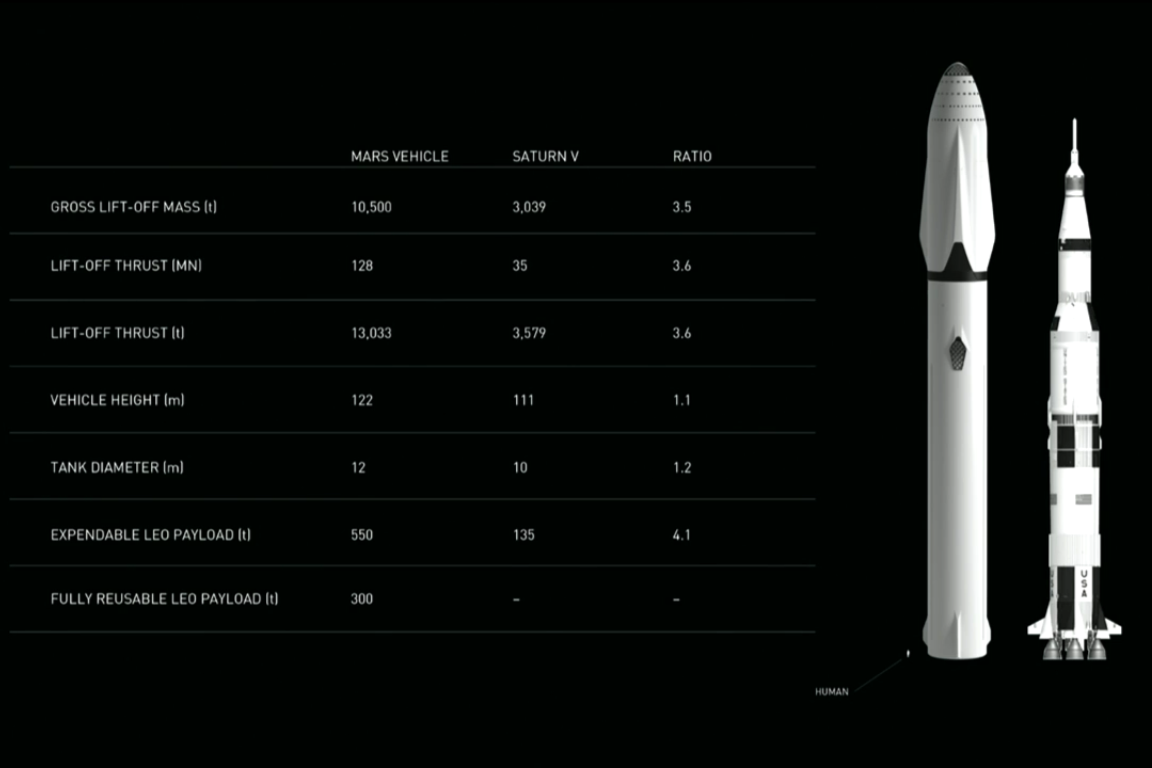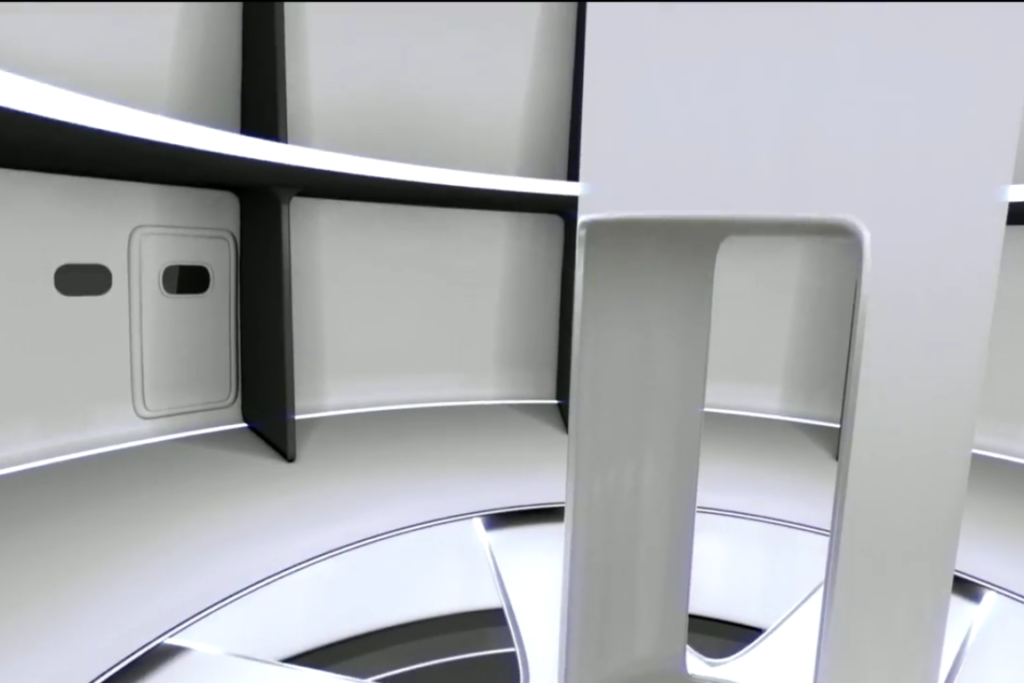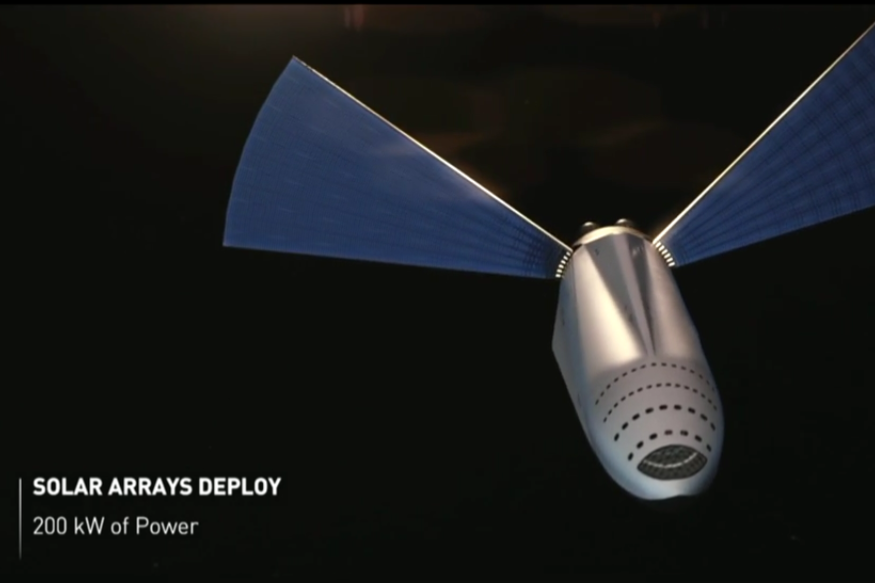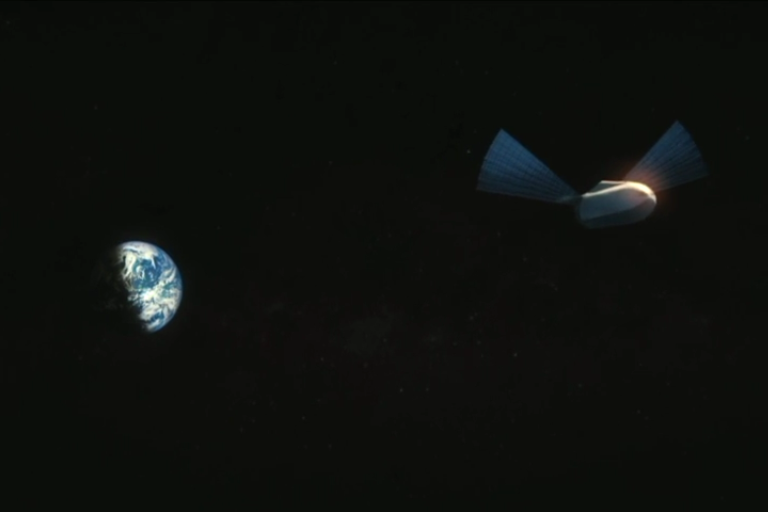Yesterday, Elon Musk played to a packed room at IAC2016 to explain how, in his terms, Humanity is going to become a “multiplanetary species.” The long and short of it: by thinking big.
Musk framed the problem in his typical millionaire businessman style: it’s not technology that’s the issue, he claims, but rather economics. And like the gigafactory and reusable LEO launches, he’s thinking in economies of scale. His first point was about reusability and cost — his claim that a ride on a Boeing 737 would cost $500,000 a seat if it weren’t reusable got more than a few laughs from the audience — but his point was simple. With many ships (ultimately over a thousand (!!) ) and reusable launch rockets, he wants to bring the cost of a trip to Mars down to roughly $200,000 a (potentially two-way) seat. So how’s that going to work?
Here’s the BFR with a Saturn V next to it for scale.

If you can’t quite see it, that speck down there to the left of the rockets is a human. It’s got 42 Raptor engines on the first stage and 9 in the MCT itself (three for atmospheric burns and six for vacuum) and can take 300 tons to orbit and still maintain full reusability.
This is the MCT.

I’m calling it the MCT because that’s the old name — the Mars Colonial Transporter — but he very specifically didn’t give anything in his presentation a name, so who knows if that’ll change. It will come in two variants (at least): the kind that carries 100+ people to Mars in anywhere from 80 to 130 days depending on the distances involved; and the kind that replaces all the crew and cargo space with fuel. I’ll explain.

This is what the inside looks like when it’s for people.

He thinks it’ll be “fun,” with places to play zero-g sports, maybe a restaurant. He makes it sound like a cruise ship.

First, they’ll launch that up into orbit. Then, the rocket will land back in place, and they’ll stick a fuel ship on board, and send that up.

The two will dock, and the fuel will start loading into the MCT for its trip to Mars. Musk imagines three to five of these fueling trips per MCT mission, and eventually whole fleets prepared in orbit waiting to head over every two years during the closest approach window. The refuelers will land propulsively (like the rockets) and be reusable.

Then it flies off to Mars, with great big solar panel arrays for power.

Bye-bye, little space fish. Come back soon!

The MCT will land on the red planet using the retropropulsion technology they’re currently working on in miniature on the Dragon 2. Musk says they’ll be launching a Dragon to Mars every two years starting in 2018 to “build up a cadence” with 2-3 tons of cargo capacity for anyone interested (hint, hint, NASA).

And we’re here! Where’s the Starbucks? Oh right.
Once they’re there, they’ll need to set up the fuel manufacturing facility that’ll make use of the water on the planet and the C02 in its atmosphere to refuel the MCT, which will fly back for reuse in another couple of years. With the scaling-up of the operation, Musk imagines a self-sustaining city of a million people on Mars in “forty to a hundred” years, with everything from “iron foundries to pizza places,” and everything in between.
In the Q&A people asked about some of the other practicalities, like protecting humans from radiation on the trip and after they’ve arrived…. and Musk’s basic response was along the lines of “it won’t be fatal” and that if you’re one of the early travellers, well, you might die. So don’t go if that’s not your thing. Of course if you hate it there, you can always come back on the next MCT return flight. (Musk said that if coming back weren’t an option, nobody would pay for the trip, and he might be right — or he might not.)
But this all fits with his plan: all he wants is to give people the way to get there. They’ll have to figure out the rest — how to survive, how to build habitats, how to grow food, how to create what he described as an artificial magnetic field to protect against solar and cosmic radiation. He sees his job as getting intrepid pioneers to Mars — the rest is up to them. And so be it, he’s picking his battles.
Meanwhile, SpaceX has already started work on the hardware.

The image above and below are of a recent test of the brand new Raptor engine, which delivers three times the punch of the Merlins that power the Falcon 9 (and the coming-soon Falcon Heavy), in almost exactly the same size package. This isn’t an accident: part of building rockets is building the machines and tools to build the rockets’ parts — and he’s already got machines to build Merlins, so why not try for something the same size?

The other part is a massive liquid oxygen tank that needs to be both lightweight and completely non-porous, a challenging combination at the best of times. Musk referred to this as “the hardest part” of the operation, and as you can see, the first prototype of a carbon-fiber supercooled LOX tank is now complete.

Everything involved in this project is so, so big.
Anyway, that’s the long and short of it. Every site out there seems to have its own version of what Musk said. The best is probably going to be Spaceflight Now, but if you want to get it straight from the horse’s mouth (as it were) you can head over to spacex.com/mars where the entire two hour presentation including Q&A is available for viewing. If nothing else, watching Elon Musk’s halting, “um” and “uh” filled, entirely non-salesmanlike presentation skills is certainly worth a look.
In the meantime, you can check out the video below of the most insane, ambitious, and plausible plan I’ve ever seen for getting people to Mars. It’s like science-fiction, but somehow… not?
***
Thanks for reading! Except for the very *very* occasional tip (we take Venmo now!), I only get paid in my own (and your) enthusiasm, so please like This Week In Tomorrow on Facebook, follow me on Twitter @TWITomorrow, and tell your friends about the site!
If you like our posts and want to support our site, please share it with others, on Facebook, Twitter, Reddit — anywhere you think people might want to read what we’ve written. Thanks so much for reading, and have a great week.
***
Richard Ford Burley is a human, writer, and doctoral candidate at Boston College, as well as an editor at Ledger, the first academic journal devoted to Bitcoin and other cryptocurrencies. In his spare time he writes about science, skepticism, feminism, and futurism here at This Week In Tomorrow.

